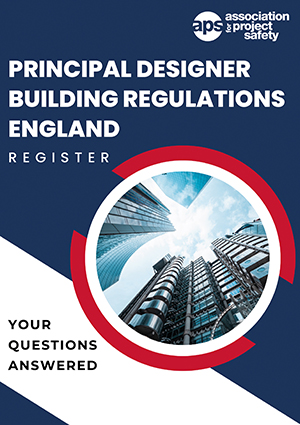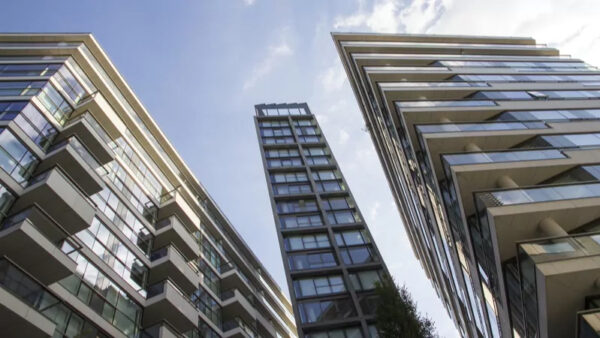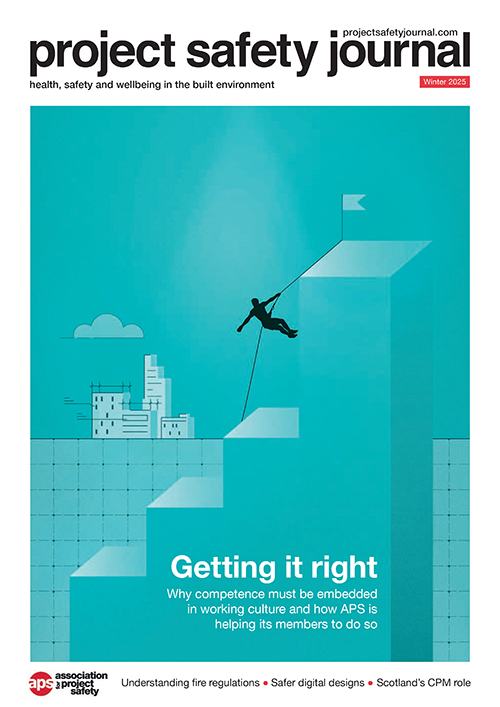
The transition period for new dutyholder roles, including that of principal designer, for building regulation compliance has now ended. Denise Chevin asked APS members and other professionals how they have been gearing up for this new challenge and the impact it will have.
One of many legislative changes introduced in the wake of the Grenfell Tower fire are new dutyholder roles that aim to provide accountability and responsibility for compliance with building regulations. The transition period to implement the new dutyholder roles ended on 6 April 2024.
The responsibilities of dutyholders mirror those under CDM which concern site safety – client, principal designer (PD), principal contractor, designer and contractor. The new requirements make similar demands in terms of coordination, management and working with other dutyholders, but also for ensuring that building works comply with building regulations.
These additional duties have been introduced through the Building Regulations (Amendments etc) (England) Regulations 2023, which insert a new Part 2A into the
Building Regulations 2010.
Growing confidence
Unlike other aspects of building safety legislation, these do not just apply to higher-risk buildings. Instead they apply to any building project that has to comply with building regulations (with a few limited exceptions for domestic properties).
Since they were introduced in October 2023, there has been trepidation – and some confusion. But there seems to be growing confidence that the system will settle down in time.
Some point to the fact that the new regulations are, in fact, only imposing responsibilities that designers and contractors should already be shouldering if they are doing their job properly.
The dutyholder roles for building regulations can be performed by the same parties who carry out the roles under the CDM regulations. The key is that clients are obliged to appoint people who are competent to carry out the role and can evidence this.
Bobby Chakravarthy, partner at Arcus Consulting and past president of APS, explains: “It then becomes the responsibility of the principal designer and principal contractor to ensure that the design teams and the contracting teams are competent as well. It means the duty is transferred on to them to check that other people are competent. So there are checks and balances in place. That’s the ethos it’s trying to create.
“But these are two separate roles – and anybody who thinks that just because they’re qualified to be the principal designer for the CDM regulations they are therefore qualified to carry out the principal designer role for building regulations is kidding themselves. They are completely different sets of competencies, though there will be individuals with both.”
Register for principal designers
There is an expectation that the principal designer under the building regulations will be a ‘designer’ and will need to be fully knowledgeable about the regulations and their implementation. RIBA launched a register for principal designers towards the end of last year for its members only. APS will launch a register this month (May). Both will require applicants to demonstrate competence, that is show they have the right skills, knowledge and experience and demonstrate the appropriate behaviour to be appointed principal designer (see below).
The twin-track approach – a principal designer for CDM regulations and a principal designer for building regulations – has been causing some confusion among clients and there is frustration that the two roles have been given the same name.
It is widely thought that the Building Safety Regulator (BSR) hoped the two roles would be carried out by the same organisation – the lead designer. Calling both by the same name has led to concern that clients don’t necessarily expect to pay two lots of fees.
Chris Bracewell, a member of the APS policy and resource committee and senior CDM coordinator at consultancy ORSA, says that his company makes it clear to clients
the two roles are separate.
“Having said that, only yesterday I got an appointment document for a project that the company will undertake the role of principal designer CDM and principal designer building regulations,” he says.
“But the solicitor who has written the appointment documents tried to combine the two roles. There is not a problem with you doing both roles, but they are two separate roles with two separate sets of legislation.”
Design and build contracts
Another issue causing confusion is what happens in a design and build contract, which is the most popular way of procuring buildings.
John Gray, a partner at HTA Design and its head of delivery, points out: “The strong guidance and opinion of the RIBA is that if you are employed by the contractor as architects, you cannot be the principal designer. The principal designer has to be the contractor themselves.
“So the only mechanism by which an architect can be the principal designer is to be appointed by the client. However, we have had situations where we are working for the contractor and the client has asked us to have a separate mini-team acting as principal designer appointed by them.
He adds: “I think it’s a knotty problem that the government didn’t anticipate. And it has not been resolved – though it is looking like quite a lot of design and build contractors are coming to the same conclusions and realising that they have to carry out the PD role in name at least, even if they might delegate the actual duties to the architect working for them.”
Alternatively, as others point out, they might contract the role to a consultant.
Chakravarthy says there is no problem with a contractor taking on both roles as long as they are competent: “I think every project needs to be looked at in its own merit and within its own complexities. You have to find the right pathway to deliver it successfully and ensure that the regulation compliances are met.”
Wider responsibility
Peter Waxman, a director at Gleeds Health and Safety, says the spirit of the act has been very much about getting architects to assume a wider responsibility to do with health and safety – and there has been frustration within the HSE that the responsibility for the CDM regulations was being shunned by the profession.
“The CDM regulations came in the first place because architects weren’t taking a holistic view,” he says. “There are various models that are developing currently. There are some where the major architects are looking to take on approved inspectors full time to advise on their design. Other CDM companies are offering the building regulations PD role as an add-on.”
However, as Peter Taylor, a partner at Leslie Clark, points out: “The problem is, you don’t get architects involved on all projects and others might not require building control. We’ve also started to notice that on some projects, companies previously providing approved inspector services are taking on the new role.
“When looking at design and build projects, under the CDM regulations many clients have always kept the principal designer appointment client side. This approach may also be adopted for the building regulations principal designer.”
The consensus is one of optimism – that the new rules will take time to settle down but industry will adapt.
APS principal designer register

The APS Principal Designer Building Regulations (PDBR) register allows clients searching for a principal designer (PD) organisation to check that their chosen firm has the appropriately competent staff for their project.
A small group within the APS has drawn up the competence requirements to mirror those set out in the PAS 8671 for principal designers and has been putting together a cohort of assessors.
Chris Bracewell, who has been involved in drawing up the competence requirements, says that the assessor group have all been “assessing” each other to ensure that they comply with the competence requirements and are therefore in a position to assess applicants.
President Mark Snelling says APS has received over 400 expressions of interest since the scheme was announced in April. APS intends to start sending out application forms in May.
Snelling says: “It will be expected that applicants will write a narrative and accompany that with evidence that they have delivered on the various competencies.”
APS says that the new scheme will be of interest to both members and non-members.
It will include sections for competent PDs who have been assessed for non-higher-risk buildings and higher-risk buildings.
To learn more about the register, contact Andrew Leslie at [email protected].












